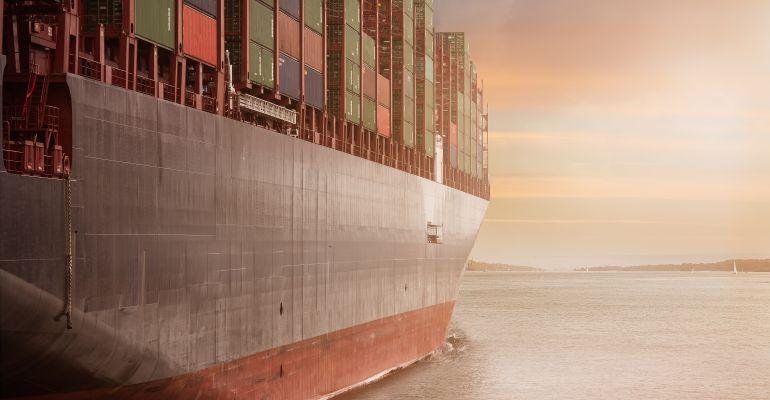However, differences between insurers of the questions of safety and the movement of cars in containers, particularly electric vehicles (EVs) have emerged following the publication of the International Union of Marine Insurance (IUMI) which published the findings of a recent study.
Soaring freight rates, congestion and a lack of roro capacity has seen delays of up to three months or more in the shipment of cars as sky-high demand adds to the sector’s problems.
One freight forwarder who specialises in the handling of cars told Seatrade Maritime News, “The cost of moving cars in containers is on a par with roro because although the freight is cheaper the cost of loading and unloading containers is greater.”
Although the costs are similar from one sector to the other the forwarder pointed out that most roro companies only operate monthly services to key markets, whereas container services are weekly.
As the automotive sector transitions to electric vehicles (EV) there have been growing concerns about the carriage of these vehicles with some high-profile accidents having been blamed on EVs, the connection of the outbreak of fires on board roro vessels, such as the Freemantle Highway.
The forwarder pointed out that CMA CGM had a policy of shipping EVs in reefer containers, a policy that has now been reversed according to Marc Lefebvre, senior manager for cargo security and safety at CMA CGM.
“Now we say it is the responsibility of the shipper to decide whether to put an EV into a dry or reefer container,” explained Lefebvre.
He went on to explain that the policy was originally used to try and control the temperature inside the container, but now CMA CGM has put the responsibility for that decision, whether to store an EV in a dry or refer box on the shipper.
“We ask shippers to sign a letter that shows that they are aware that the battery temperature of EVs can increase dramatically, above 60degs centigrade, and that the shipper accepts the liability for the carriage of an EV,” said Lefebvre.
CMA CGM is particularly concerned about older EVs, cars with batteries older than seven years old will not be accepted for carriage, but older vehicles with a certificate showing that the battery pack is less than seven years old will be handled.
In addition, Lefebvre said that the French carrier will prevent containers with dangerous cargoes being stored in direct sunlight, but he pointed out that it is the shipper’s responsibility to decide whether are car is safe to be shipped, as they know the cargo, while the line cannot “monitor where the containers are stored at the port.”
Those concerns are shared by some in the shipping industry, with the threat considered very real to the well being of crews, firefighters, vessels and the environment.
Eva Mckiernan, a technical director and senior investigator at Jensen Hughes, told the Lithium-ion Batteries in the Logistics Supply Chain conference in London in March that lithium-ion batteries burn at around 1,200degs centigrade, while combustion happens within seconds.
Heat generated can cause thermal runaway, which occurs when the heat and chemical reactions reach a certain level, the fire becomes self-sustaining and very difficult to extinguish, she said.
This view is at odds with the IUMI study, which was published on 1 September, referencing the EU Lashfire project IUMI said: “Several misconceptions regarding battery electric vehicle fires circulate publicly and lead to uncertainty. Fires in battery electric vehicles are not more dangerous than fires in conventional vehicles and are currently not more frequent.”
According to the IUMI report it said research proves there are only minor differences between the energy released by an EV fire and a fire in an internal combustion engine vehicle (ICEV).
TT Club risk management director Peregrine Storrs-Fox said, “It is uncomfortable to have a difference in views between international insurers.”
Storrs-Fox said that IUMI’s research had reached different conclusions to those reached by a broad church of industry opinion, but that “These are conversations need to be had.”
He added, “It is worth listening to all views and engaging with those that hold those views.”
Essentially there are a number of issues that need to be clarified and the industry needs to embrace a new regime, industry needs to “understand and manage the risks,” said Storrs-Fox.
That there is no evidence that the number of fires in EVs is greater than in ICEVs is agreed, but that IUMI’s research findings that the heat generated from lithium-ion battery fires is not excessive, burns longer and can easily reignite, these views “could look complacent,” said Storrs-Fox.
In addition, Storrs-Fox believes that there is a disconnect in the classification of machines that contain lithium-ion batteries. Currently these items, including EVs, are classified as Class 9, miscellaneous dangerous goods.
There is a discussion as to whether such goods should carry a DG classification more in line with a substance rather than an article, with Class DG classification which deals with items that are flammable.
Copyright © 2024. All rights reserved. Seatrade, a trading name of Informa Markets (UK) Limited.
Add Seatrade Maritime News to your Google News feed.  |

